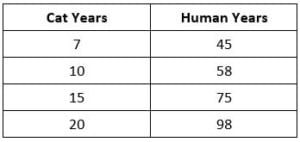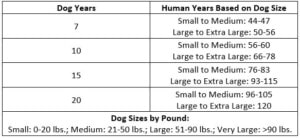 With humans, there is a bit of a debate over when people are considered seniors. In pets, the line is even more blurry. November is National Senior Pet Month and we here at AVES want to take a moment to discuss senior pet care for these special patients.
With humans, there is a bit of a debate over when people are considered seniors. In pets, the line is even more blurry. November is National Senior Pet Month and we here at AVES want to take a moment to discuss senior pet care for these special patients.
When Are Pets Considered Seniors?
As we all know, animals age much more quickly than humans. But did you know that aging, even within the same species, is also determined by the size of the animal? For example, cats and small dogs are usually considered senior or geriatric by age twelve. Large breed dogs have shorter lifespans, so they are often considered senior by age six to eight.
Although many people believe that one year of human life equals seven years of dog life, the reality of aging for our pets is more complicated. There are some calculations that can help you better understand your pet’s age in human terms, however.


Dealing with Senior Pet Health Issues
Just like for people, there are a lot of changes going on as your pet ages. In many pets, as in many people, health can start to decline as they enter their senior years. Some of the most common problems include:
- Cancer
- Heart Disease
- Diabetes
- Joint and Bone Diseases
- Liver Disease
- Kidney/Urinary Tract Disease
- Weakness
- Senility
While these health problems may seem scary, many of them can be treated or managed with veterinary care. Medications could help control many of these issues, as well as any discomfort that your pet may feel as a normal part of the aging process.
One of the best things you can do for a senior pet is bring them to a veterinarian for physical exams. While you are probably used to bringing your pet in once a year, you should expect to come in at least twice a year when your pet is older. This may seem like an inconvenience, but it is important to remember that two yearly veterinarian appointments would be equivalent to one doctor visit every three to five years for a person.
Physical exams for senior pets should include bloodwork and urine screens at least once a year. Other possible workups could be ECGs, X-rays, and blood pressure monitoring. These tests can help catch medical problems sooner, which allows your pet to get the care he or she needs faster.
Nutritional needs also change as your pet ages. Depending on your pet’s health, your veterinarian may recommend changing your pet’s diet. Aging pets might start rapidly gaining or losing weight, and a new food could help counteract a dramatic change in body condition.
Exercise and a healthy weight is still important for elderly pets; however, you might need to adjust your pet’s exercise routine. Walking is a good form of exercise for older pets. You may also be able to start your pet in physical therapy to make sure that all exercise is done in a manner that is safe and healthy for your dog or cat.
Your house may also be posing a challenge to your pet once they begin to get older. Wood floors may be more difficult to walk on than they used to be. Your pet might get cold more easily than before. Stairs may be too hard to go up and down. Try to make it a little easier for your pet to get around and live in your home. You might need to get more blankets or an orthopedic pet bed. Make it easy for your pet to get to their food and water (you may even consider elevating the bowls). Keep in mind that while many pets experience arthritic changes as they age, there are also specific orthopedic injuries that can cause lameness, difficulty rising, jumping, and going up and down steps. Check with a veterinarian or veterinary orthopedic specialist to be sure your pet hasn’t sustained an injury that could be treated to improve their quality of life.
Dealing with Senior Pet Behavioral Issues
Aging pets may also exhibit behavioral problems. In fact, these may be some of the first signs of aging you notice with your pet. Behavior issues can be caused by a number of things, but some of the most common behavioral changes in senior pets include:
- Confusion
- Disorientation
- Increased reaction to sounds
- Increased irritability, aggression, or anxiety
- Increased vocalization
- Decreased interaction with humans
- Lack of grooming
- House soiling
- Decreased response to commands
- Increased wandering
- Changing sleep cycle
- Repetitive Activity
Even though these may seem like odd behavior issues, they tend to be quite frequent in older pets. However, if you start to notice any of these signs in your aging pet, you should contact a veterinarian to schedule an appointment, as some of these symptoms are also associated with treatable medical conditions. While some of these may seem hard to deal with, patience is very important during these changing times. Your pet could be battling with dementia or any number of problems that aren’t visible.
Quality of Life
While your dog or cat may no longer be able to do all of the fun things that he or she once did, it is important to remember that a happy, healthy life is absolutely possible for your pet. Instead of focusing on the things that your pet can no longer do, find things that your pet can enjoy. Maybe your quality time is cuddling on the couch instead of going on hikes. If you notice that your pet’s quality of life seems to be decreasing, it is time to speak to your veterinarian to see what you can do to help.
If your veterinarian recommends that your pet sees a specialty veterinarian during the aging process, ask for a referral to a specialty center. If you are in the Austin area, AVES would be happy to see your pet. We can be reached at 512-343-2837.
- Urethral Bulking for Recurrent Urinary Tract Infections in a Female Dog with Suspected Subclinical Incontinence by Tanner Slead, DVM, DACVIM - May 29, 2025
- Gastrointestinal Foreign Body by Jeremy Fleming, DVM, DACVS-SA - March 24, 2025
- Angular Limb Deformity by Russell Kalis, DVM, DACVS-SA - November 18, 2024

